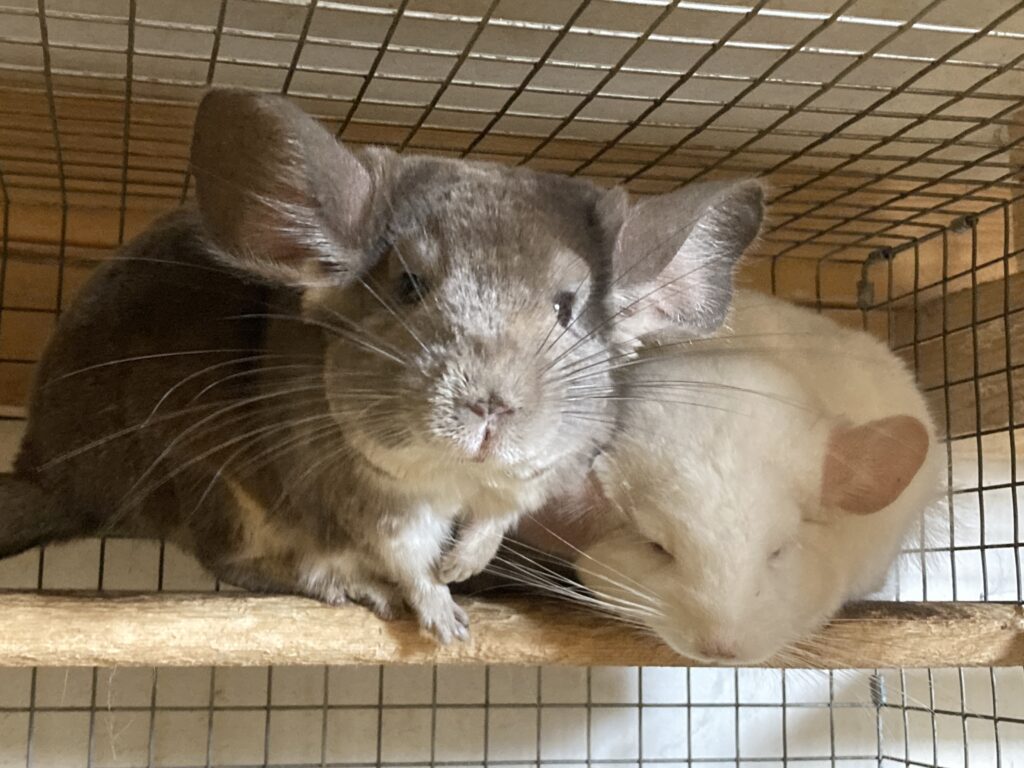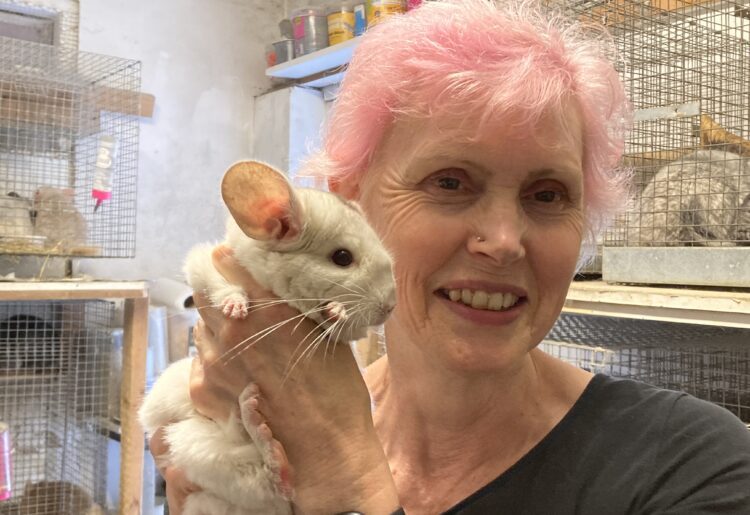IN A carefully climate-controlled shed, borough resident Heather tends at least twice a day to her family of nearly 100 chinchillas.
The creatures, which look like little round snowballs, require scrupulous care and attention, something which, as vice chair of the National Chinchilla Society, she takes very seriously.
“My journey with chinchillas began in the 1980s when my husband and I spotted some in a New Forest pet shop,” she said.
“I had kept hamsters, mice and guinea pigs as a child, but as an adult I have always been fascinated by chinchillas.
“We bought our first one then, followed by several more – and I was hooked.”
Today, Heather is a chinchilla expert, breeding animals for shows and educating potential owners about these unique pets.
Unlike your average house pet, chinchillas come with a distinctive set of care requirements.
For example, they can easily suffer from heat exhaustion.
“They can’t tolerate more than 10 degrees of temperature change,” Heather explained.
“Following recent warmer summers, I’ve had to install air conditioning and fans in the shed to keep them comfortable.
“Their fur is so dense that they can quickly overheat, so it’s important to encourage them to rest quietly when it’s warm.
“I’ve heard of people who let theirs bounce around the house in hot weather, only to find them collapsed and unwell with heat exhaustion, just as we would if we exercised in a very thick coat.”

A relative of the guinea pig, chinchillas come originally from the barren rocky slopes of the Andes Mountains in South America, where conditions are cool and arid.
Once common in parts of Chile, Peru, and Bolivia, since being extensively hunted for their pelts, they are now critically endangered in the wild.
They are perfectly adapted to their dry mountain climate.
Each of their hair follicles grows between 60 to 90 individual hairs to keep them warm, and their red blood cells can absorb more oxygen than other rodents, enabling them to thrive in thinner mountain air.
As prey animals, they like to seek out crevices for safety, and live in wild colonies of more than 100 individuals.
Their mountain diet is limited to dry grasses, leaves, twigs, berries, herbs, cactus fruit, and tree bark.
“Chinchillas don’t cope with wet food at all,” said Heather.
“It makes them very sick.
“Someone once told me they had given theirs a banana, and was surprised when it then died.
“You have to be so careful to give these animals only what’s good for them, not what you think they’d like.”

Heather’s animals eat chinchilla pellets and timothy hay, with a sprinkling of wheatgerm, cornflakes, rolled oats, apple sticks, weetabix, or shredded wheat for variety.
As with all rodents, their teeth grow continuously, so chewing abrasive hay is important to keep them ground down.
They also love to gnaw lumps of thermolite brick.
“They’ll chew anything,” said Heather, “but they especially enjoy getting their teeth into thermolite – and their wooden shelves.
“They’re real nibblers,” she warned.
“People who let chinchillas out in the home need to watch them continuously to prevent them from damaging woodwork, or electrocuting themselves by chewing through cables.”
They don’t make suitable pets for a young child, and even for a teenager, they present a serious long term commitment.
“A chinchilla will be with you a long time,” Heather said.
“In the wild they may live for eight to 10 years, but in captivity can reach 20.
“When people say they want one for their teenager, I always ask them what they’ll do with it when that child goes to university.”
Like Gremlins in the 1984 horror film, chinchillas should never be allowed to get wet.
Unlike Gremlins, they won’t turn into monsters – but they will get sick.
To keep them dry, their housing requires careful thought.
“Cages must have wire bottoms so that any waste falls through to a tray below, and they won’t sit in it,” Heather explains.
“Their home should be long and low rather than tall, as chinchillas can jump quite high, and then fall off a ledge and hurt themselves.”

While not typically affectionate pets, Heather says that chinchillas can have distinct personalities.
One nervous female she adopted wasn’t used to people, and would spray urine in people’s eyes when they approached.
“Now she’s absolutely fine,” she said, “but that’s why I spend time with all my animals regularly.”
The chinchilla showing scene has changed dramatically since the pandemic.
“We used to have eight shows a year at the National Chinchilla Society but now we’re down to four,” Heather said.

Rising costs have hit breeders hard but while many have given up, Heather’s dedication hasn’t wavered.
She often rises at 5am to care for her charges, and even pays a vet nurse to look after them when she’s away.
Her commitment to them extends to educating others, and she regularly welcomes neighbours and their children for chinchilla visits.
“I love their cuteness, and I’m fascinated by their different colours,” she said.
For more information, visit: nationalchinchillasociety.co.uk and rspca.org.uk














































